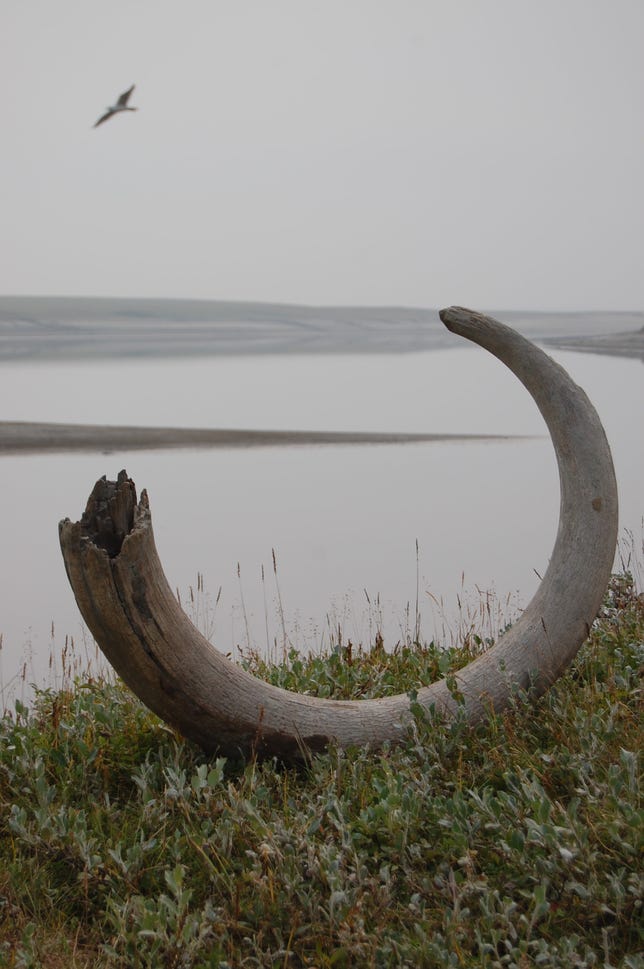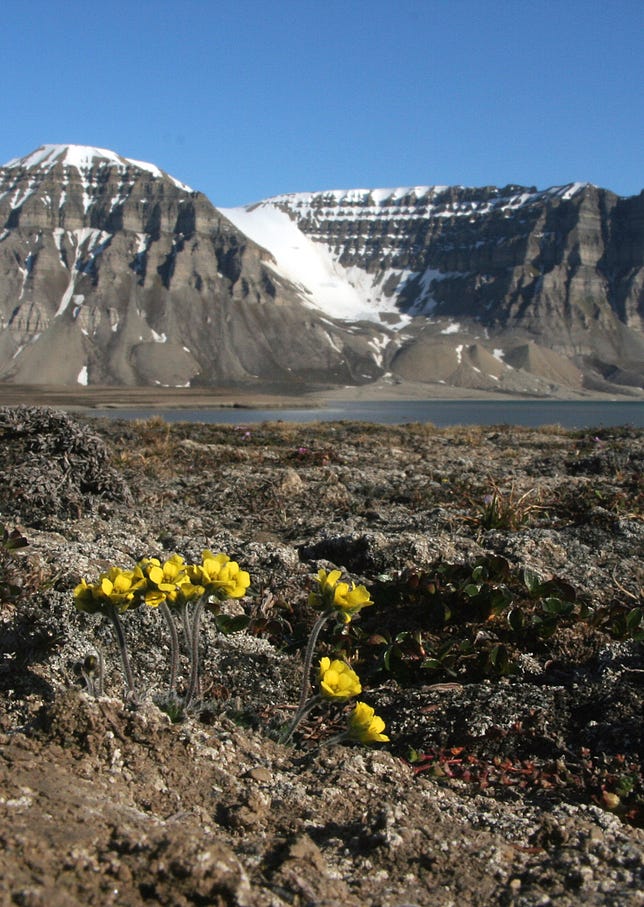
[ad_1]

A trio of woolly mammoths trudges over snowy terrain. Behind them, snow-capped peaks rise above dark green forests of fir trees.
Daniel Eskridge
About 4,000 years ago, the last majestic woolly mammoth roaming Earth vanished, and for decades, scientists believed the colossal ancestors of elephants went extinct because humans hunted them relentlessly. DNA analysis of the animals’ old stomping grounds, however, reveals a different story.
The likelier culprit, researchers now say, was rapid climate change that ultimately wiped out the creatures’ food supply. But besides solving the mystery of the disappearing mammoths, these findings may offer a glimpse into the fates of other species if our present climate crisis isn’t controlled.
“We have shown that climate change, specifically precipitation, directly drives the change in the vegetation — humans had no impact on [the mammoths] at all based on our models,” Yucheng Wang, a zoologist at the University of Cambridge and first author of the paper published Wednesday in the journal Nature, said in a statement.
Co-author Eske Willerslev, a fellow at the University of Cambridge and director of the Lundbeck Foundation GeoGenetics Centre at the University of Copenhagen, added, “This is a stark lesson from history and shows how unpredictable climate change is — once something is lost, there is no going back.”
These gentle beings that dined on grass and flowers lived alongside Neanderthals. While many encounters might have been peaceful, the animals were a hot commodity when it came to making fur coats, musical and artistic instruments and hearty meals. That’s because of their thick, chocolate-colored fur, their sturdy, enormous tusks and their huge size.

A mammoth tusk on a bank of the Logata River in Russia.
Johanna Anjar
They weighed approximately 6 tons and stood about 13 feet (4 meters) tall — as Wang puts it, woolly mammoths could “grow to the height of a double-decker bus.”
“Scientists have argued for 100 years about why mammoths went extinct,” Willerslev said. “Humans have been blamed because the animals had survived for millions of years without climate change killing them off before, but when they lived alongside humans they didn’t last long and we were accused of hunting them to death.”
It makes sense that prehistoric people were suspected to be behind woolly mammoths’ eventual demise instead of climate change. These animals somehow withstood the Ice Age about 12,000 years ago — the fanciful Disney movie Ice Age has some thoughts on that — but the new study’s researchers decided to dig a little deeper.
Over a period of 10 years, Willerslev led a team in dissecting DNA fragments collected from the Arctic soil where mammoths were known to graze. The samples were collected over 20 years and analyzed using a method called DNA shotgun sequencing.
DNA shotgun sequencing is an indirect way to create genetic profiles without requiring a person or animal to physically be there. Instead of collecting genetic information from bones or teeth, the method sequences DNA from traces of urine or discarded cells. Scientists have also used this tool to track the movement of COVID-19 by creating DNA profiles from sewage remnants.
The researchers looking into ancient mammoths discovered populations of the enormous animals — uncovered using the sequencing method — were depleted at a rate consistent with the quick speed of climate change at the time. Willerslev says it was because “as the climate warmed up, trees and wetland plants took over and replaced the mammoth’s grassland habitats.”

The modern Arctic landscape.
Inger Greve Alsos
“When the climate got wetter and the ice began to melt, it led to the formation of lakes, rivers and marshes,” he said. “The ecosystem changed and the biomass of the vegetation reduced and would not have been able to sustain the herds of mammoths.”
Wang also notes that prehistoric humans would’ve probably spent most of their time hunting animals much smaller and easier to capture than enormous woolly mammoths, suggesting their impact on the animals’ extinction was arguably smaller than intuitively thought.
Another important aspect of the findings, Wang said, is “we have finally been able to prove that it was not just the climate changing that was the problem, but the speed of it that was the final nail in the coffin — they were not able to adapt quickly enough when the landscape dramatically transformed and their food became scarce.”
Such speed is why the researchers naturally drew parallels between what happened back then and what appears to be in store for us now. For instance, our global temperature is rising so quickly that many countries’ former goal of limiting the increase to 1.5 degrees Celsius (2.7 degrees Fahrenheit) is now considered nearly impossible by the UN’s Intergovernmental Panel on Climate Change. That’s unless immediate, drastic measures are taken, they say.
“It shows nothing is guaranteed when it comes to the impact of dramatic changes in the weather,” Willerslav said. “The early humans would have seen the world change beyond all recognition. That could easily happen again, and we cannot take for granted that we will even be around to witness it.”
“The only thing we can predict with any certainty is that the change will be massive.”
[ad_2]
Source link